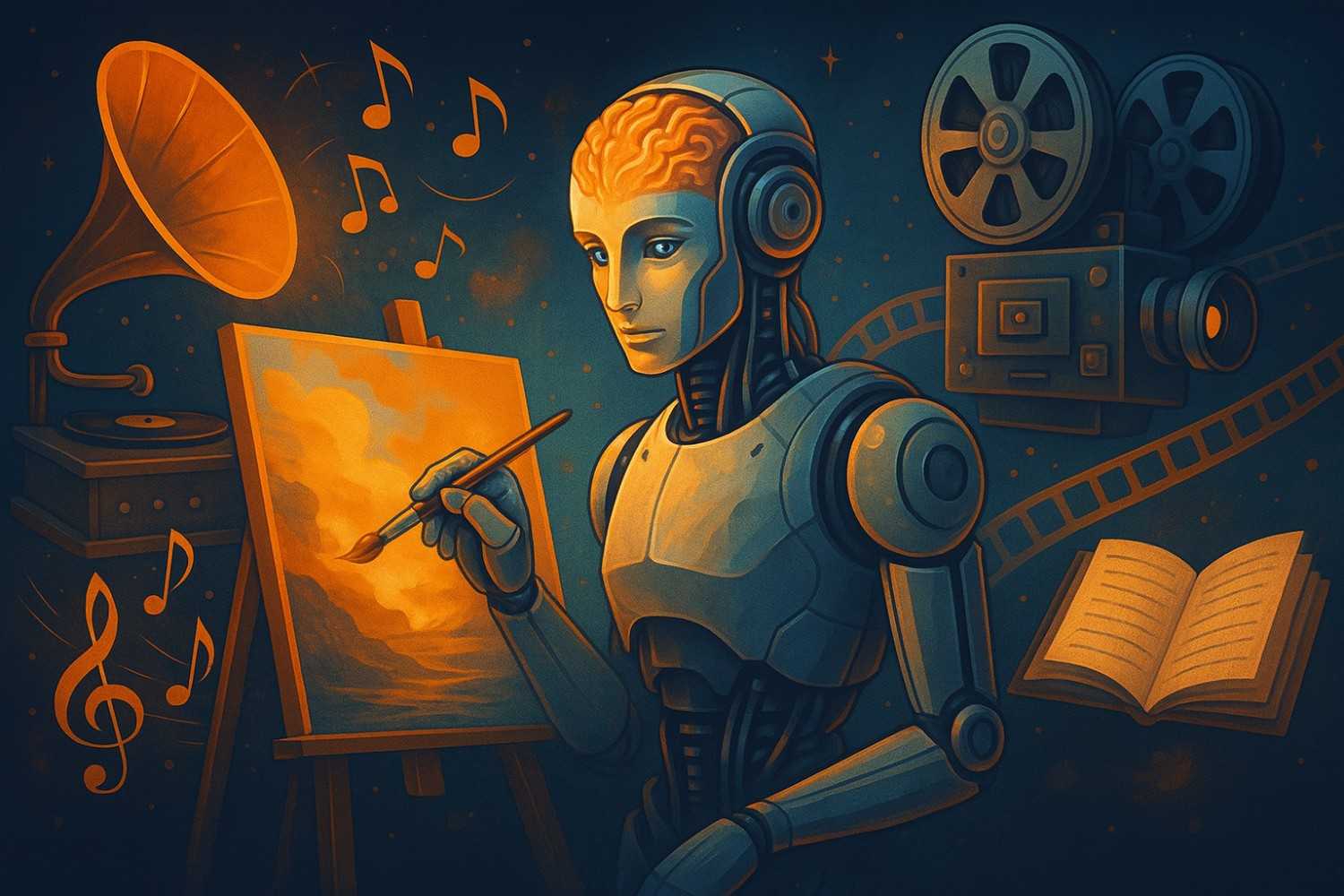In just a few years, artificial intelligence has moved from science fiction to the heart of creative industries. Whether it’s painting, composing music, writing, or filmmaking, artificial intelligence is profoundly transforming both the ways we produce art and the very notion of creativity. Let’s dive into ten remarkable how AI is reshaping the worlds of art, music, literature, and cinema today.
1. AI-Powered Painting and Digital Art
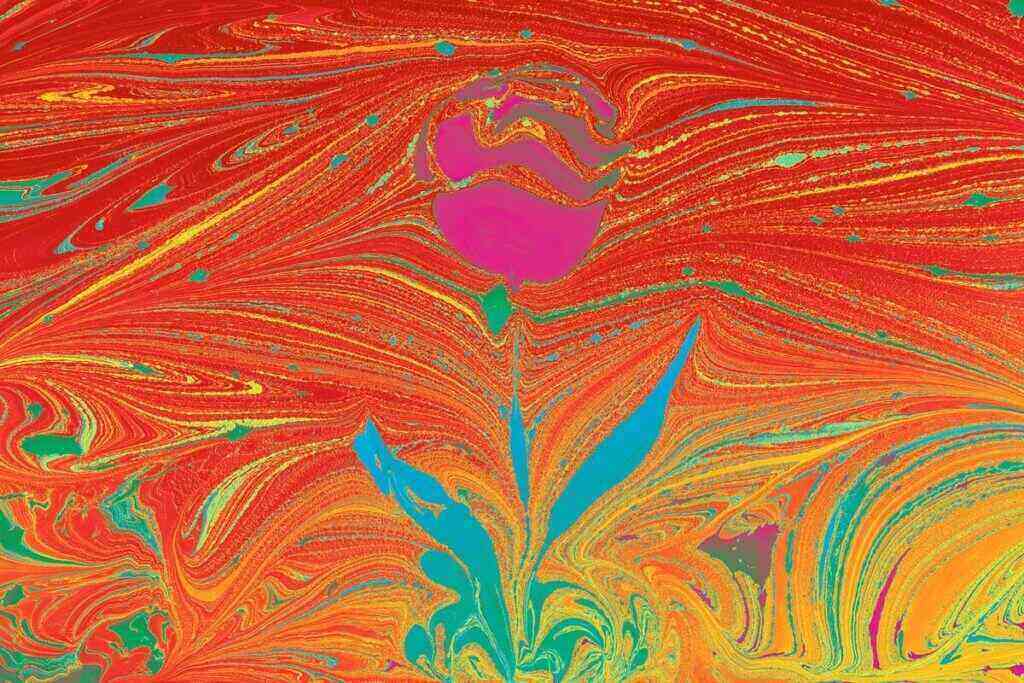
AI tools like DALL-E 3, Midjourney, and Stable Diffusion have revolutionized visual art by generating highly detailed images from text prompts. Artists now use these tools to explore new styles, generate drafts, and expand their creative horizons.For example, digital artist Refik Anadol creates immersive installations by feeding AI massive data sets, turning abstract information into dazzling visual experiences. AI-generated art is increasingly sold as NFTs, sparking debates about originality and copyright. However, even traditional artists are finding value in AI for sketching concepts or exploring alternative compositions before picking up a brush.
Although some traditionalists worry that AI might diminish the value of human creativity, others view it as a collaborator—an inventive co-creator instead of a substitute. The technology’s rapid progress suggests AI-generated Art will keep pushing boundaries around who creates it and what creativity truly means.
For more on AI in art, see this BBC article on AI artists.
2. Music Composition with Machine Learning
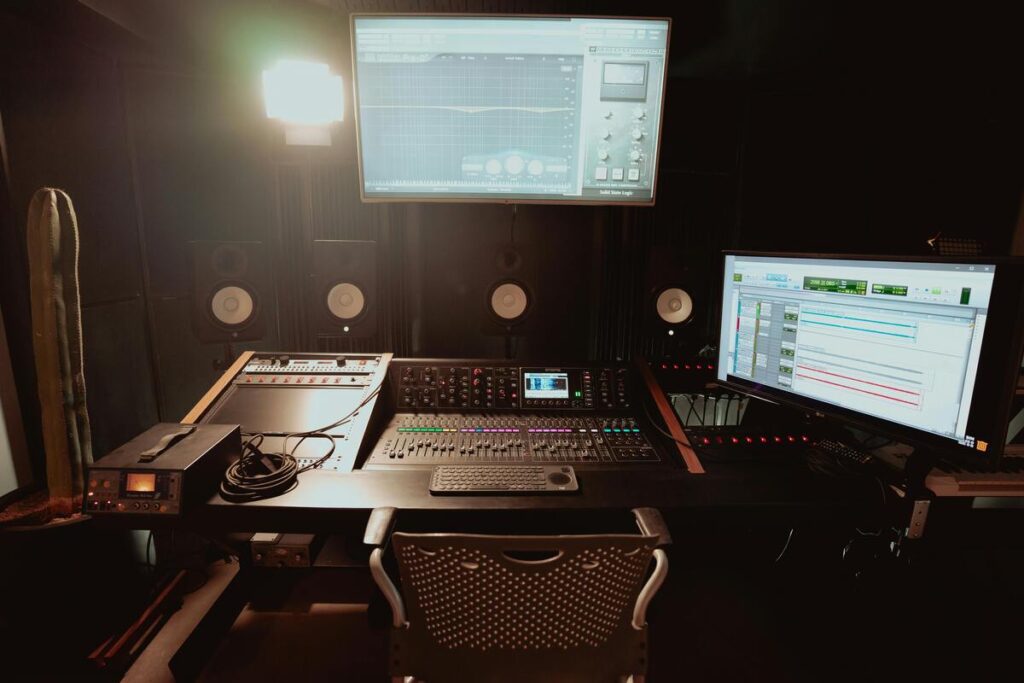
AI’s influence on music is profound, with tools like AIVA, Amper Music, and Google’s MusicLM composing everything from classical scores to pop tracks. Such technologies sift through massive collections of music, uncovering patterns and musical frameworks that spark fresh compositions. Musicians like Holly Herndon incorporate AI into their artistry, employing neural networks to transform vocals and craft unique, ethereal soundscapes. Meanwhile, companies such as Endel craft personalized soundscapes for focus, sleep, or relaxation, all generated in real time by AI algorithms.
Some musicians fear that AI-generated music may undercut human composers in commercial contexts like advertising or background music. However, many see it as a way to accelerate their creative process, providing new ideas and harmonies they might never have considered.
A fascinating example is Taryn Southern, who released an entire album, “I AM AI,” composed with the help of AI tools—a testament to the technology’s creative potential.
Explore more in this Rolling Stone piece on AI in music.
3. Automated Writing and Creative Text
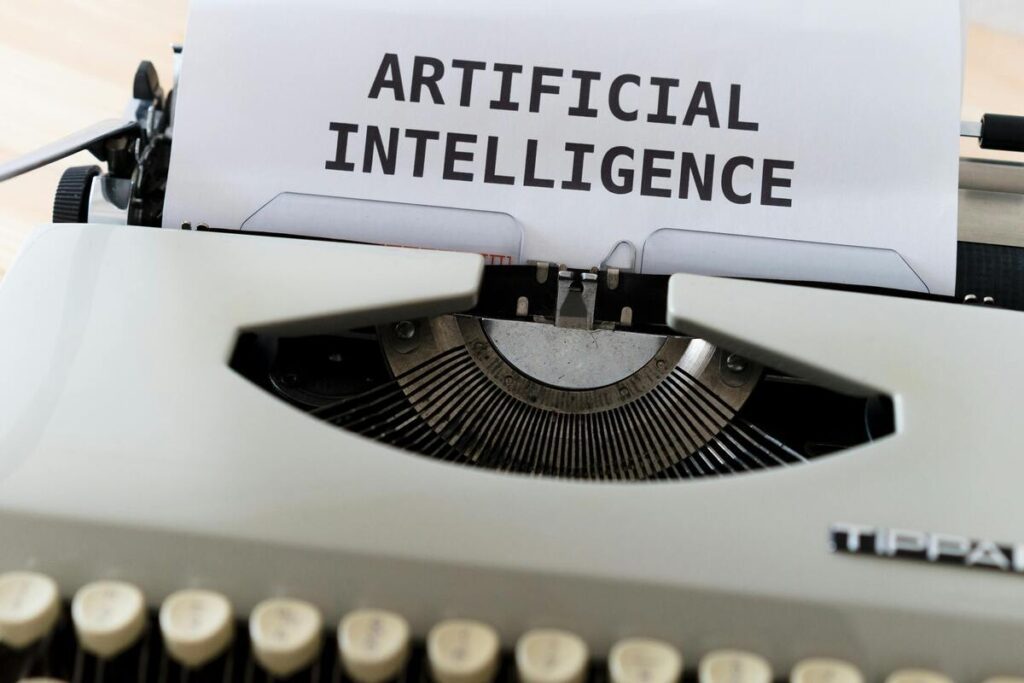
From novels to marketing copy, AI language models like ChatGPT, Claude, and Jasper are reshaping the writing process. These tools can generate dialogue, brainstorm ideas, suggest story arcs, and even mimic specific literary styles.
While some authors fear plagiarism or homogenization of style, others find AI helpful for overcoming writer’s block or testing narrative possibilities. Notably, sci-fi author Robin Sloan has used AI as a “strange co-writer,” feeding it passages from his works to spark fresh ideas.
News organizations also employ AI to write routine reports or financial summaries, freeing journalists for more in-depth work. However, concerns remain about factual accuracy, bias, and potential job displacement in writing professions.
Even poetry has seen AI’s touch: Janelle Shane’s experiments show how AI can produce amusing, sometimes eerie verse that pushes creative boundaries.
Check out this New York Times article exploring AI and writing.
4. AI-Assisted Screenwriting
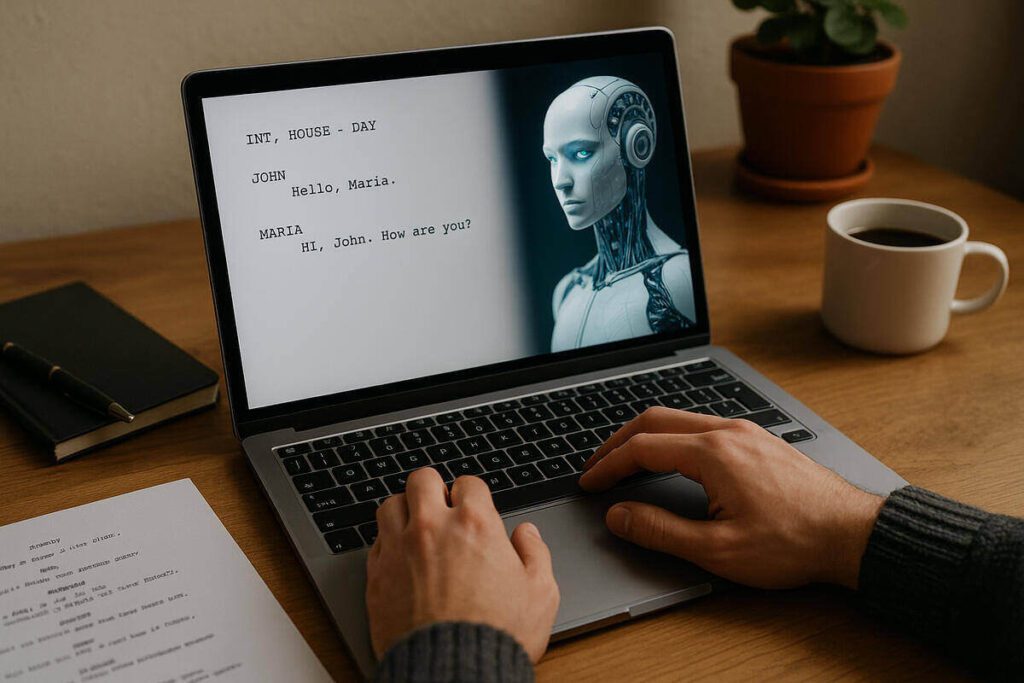
More and more filmmakers are turning to AI tools to help generate scripts, develop storylines, and craft dialogue. Tools like Scripta and Plotagon offer predictive suggestions, generate scenes, and analyze narrative structures to enhance storytelling.
AI doesn’t yet replace human screenwriters, but it’s becoming a brainstorming partner that can propose unexpected plot twists or help flesh out secondary characters. For instance, Netflix reportedly uses algorithmic analysis to predict what story elements will resonate with audiences in specific regions, influencing decisions on script development and greenlighting projects.
Writers have mixed feelings—some view AI as a threat to originality, while others embrace it as a time-saving tool. The 2023 Hollywood writers’ strike even raised issues around studios potentially using AI to generate first drafts of scripts.
Ultimately, AI’s strength lies in quickly producing drafts or alternatives that human writers can refine, rather than crafting finished screenplays on its own.
Read more in this Variety article about AI in Hollywood.
5. Personalized Music and Art Experiences
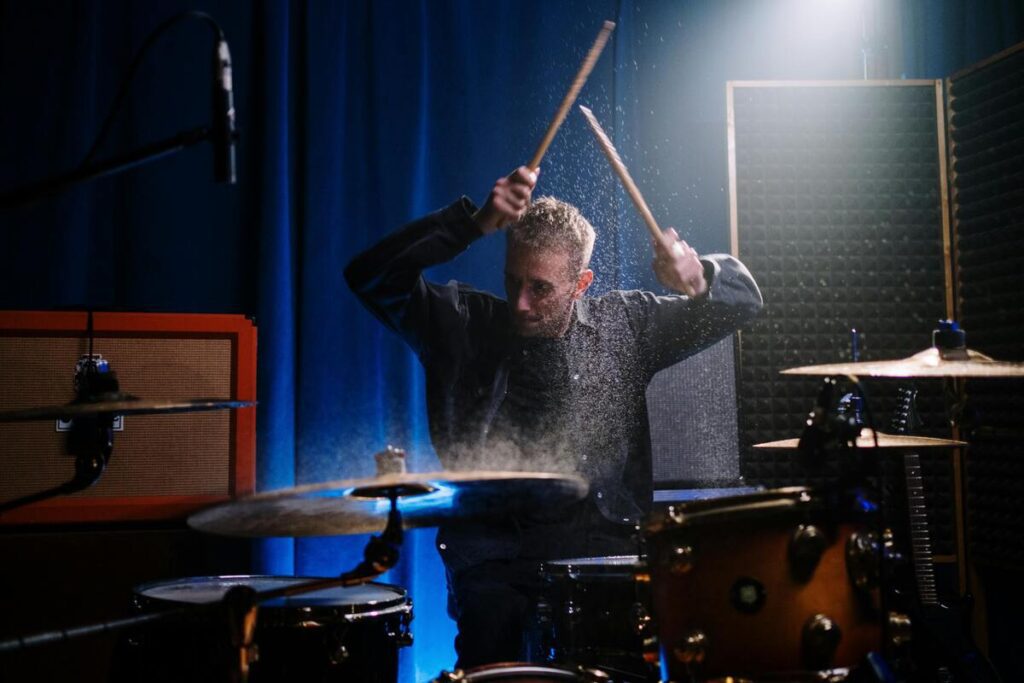
AI isn’t just creating art—it’s customizing it for each listener or viewer. Platforms like Spotify and Apple Music deploy machine learning to curate individualized playlists based on user preferences and listening habits.
Visual art is also becoming personalized. Google’s Art Selfie app uses facial recognition to match users with historical portraits, offering a playful glimpse into art history. Museums like the Dalí Museum in Florida employ AI to create interactive exhibits where visitors engage directly with a digital likeness of Salvador Dalí.
Such personalization creates deeper connections between audiences and art, offering experiences tailored to emotional states, moods, or specific interests. However, critics worry it might isolate people in echo chambers, reducing exposure to new and diverse cultural expressions.
AI’s ability to personalize creative content could transform how we engage with culture, entertainment, and even education.
For a deeper dive, see this MIT Technology Review article on AI personalization.
6. Deepfake Technology in Filmmaking
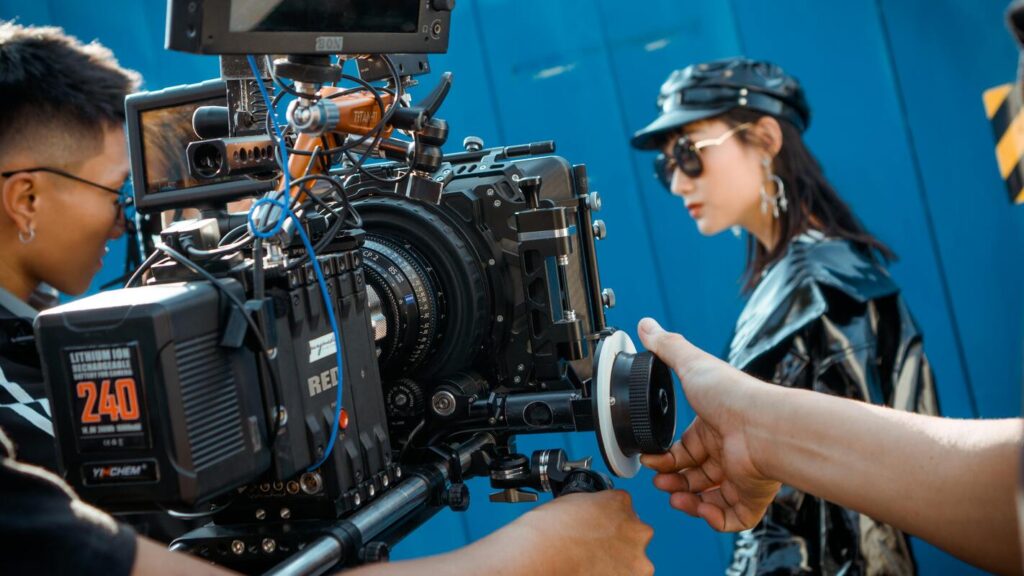
Deepfake technology has become a potent filmmaking tool, allowing creators to digitally alter faces and voices with astonishing realism. While notorious for misinformation risks, deepfakes are also revolutionizing film and TV production.
Lucasfilm’s use of deepfake technology to de-age Mark Hamill as Luke Skywalker in “The Mandalorian” and “The Book of Boba Fett” demonstrates how AI can resurrect characters or create digital doubles for dangerous stunts.
Deepfake tools can save costs on reshoots, maintain actor continuity, and enable storytelling previously impossible. However, ethical concerns loom large: misuse can threaten actors’ rights and spread disinformation. The film industry is now grappling with how to regulate and disclose such uses transparently.
AI-driven facial and voice synthesis continues to advance rapidly, promising even more realistic digital performances in future productions.
For a detailed exploration, see this CNN piece on deepfakes in Hollywood.
7. AI-Driven Video Editing
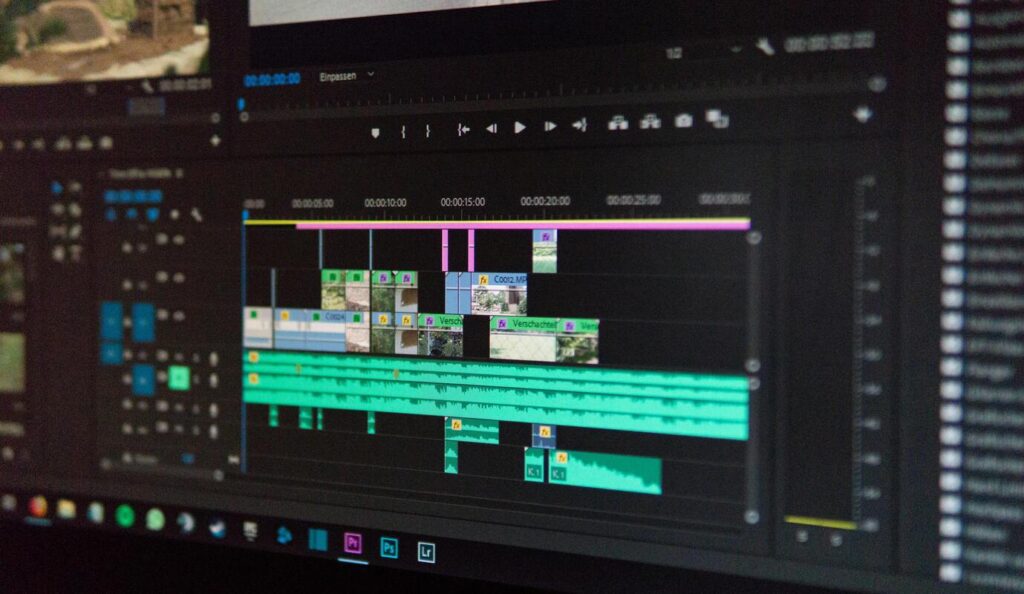
AI has dramatically streamlined video editing, transforming a time-consuming process into a far more efficient one. Tools like Adobe Premiere Pro’s Sensei AI and RunwayML can automatically cut scenes, remove backgrounds, adjust color grading, and even generate B-roll footage.
Editors can quickly search video transcripts for key moments or have AI suggest visually engaging cuts to match music rhythms. For social media creators, apps like Magisto or Lumen5 turn raw clips into polished videos with minimal manual effort.
Major studios use AI to analyze audience reactions, tailoring trailers to maximize emotional impact—a practice seen in the creation of trailers for blockbuster films like “Logan” and “Deadpool.”
Despite concerns that AI might reduce jobs in post-production, many professionals see it as a powerful assistant rather than a replacement, freeing human editors for higher-level creative decisions.
Dive deeper with this Fast Company article on AI in video editing.
8. Generative Art for Branding and Design
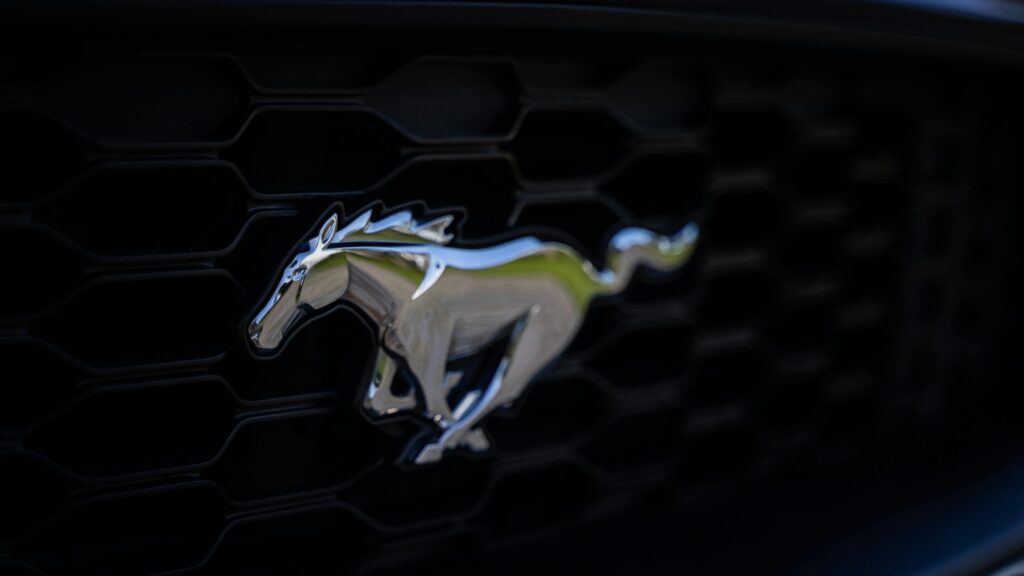
Businesses are turning to AI to generate logos, brand assets, and marketing visuals at unprecedented speed. Tools like Canva’s Magic Design and Looka create logos and social media graphics based on user input, saving time and budget for small businesses and entrepreneurs.
Generative art is also transforming UI/UX design. AI can suggest color palettes, layouts, and typography tailored to brand personalities, ensuring consistency across digital products. Companies like Wix use AI-driven design assistants to build entire websites with minimal human input.
However, overreliance on AI can produce generic designs lacking the unique touch that human designers bring. Many professionals now use AI for initial drafts or inspiration, then refine the work manually to ensure originality.
The democratization of design is perhaps the biggest impact—entrepreneurs without formal training can now create professional-looking visuals quickly and affordably.
For more insights, read this Wired article on AI and design.
9. AI in Film Visual Effects (VFX)
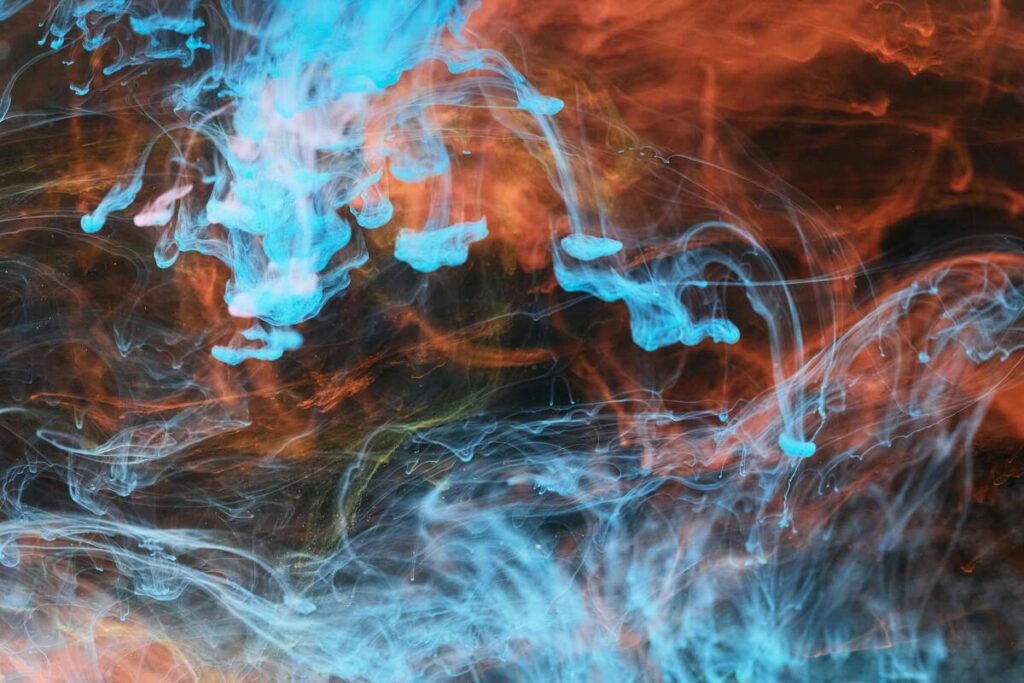
AI is a game-changer in visual effects, helping artists generate lifelike scenes that would be impossible or too expensive to film practically. Machine learning techniques can automate labor-intensive tasks like rotoscoping (isolating objects frame by frame), texture synthesis, and crowd simulation.
For instance, Weta Digital, the studio behind “Avatar” and “The Lord of the Rings,” employs AI tools to enhance facial animations and make digital characters more expressive.
AI also speeds up rendering processes, reducing costs and allowing studios to meet tight production deadlines. Innovations like NVIDIA’s AI-driven upscaling (DLSS) improve image quality without requiring massive computational power.
Still, some fear that as AI handles more creative VFX tasks, it could replace skilled artists. Yet most professionals believe AI will augment their abilities, letting them focus on the highest-level creative decisions rather than repetitive tasks.
Read more in this Hollywood Reporter article on AI in VFX.
10. Ethical Challenges and Creative Rights
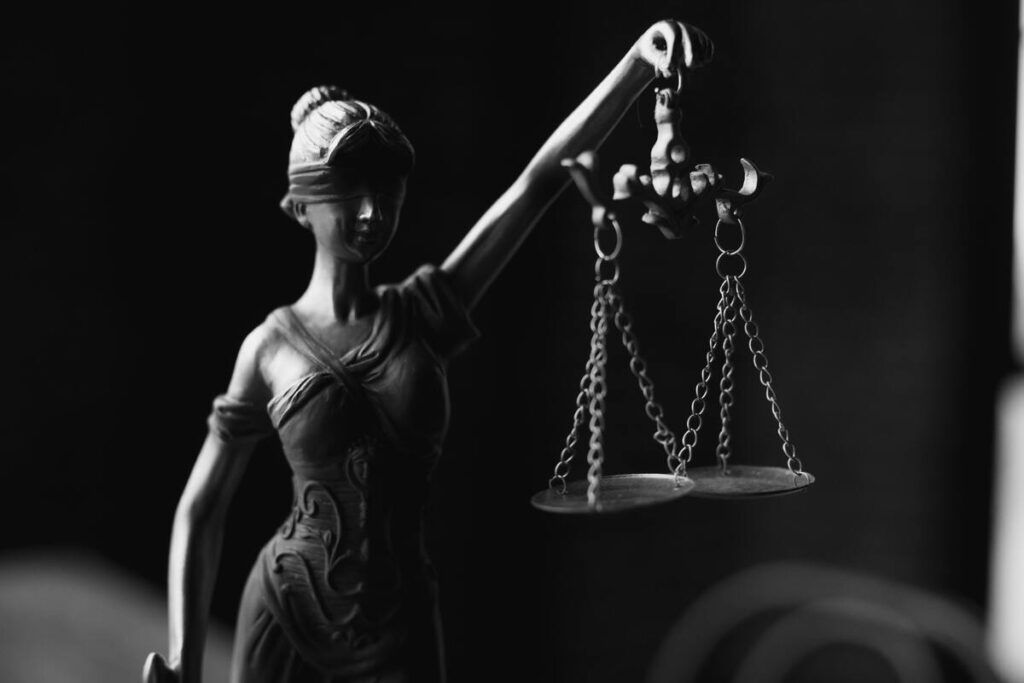
While AI unlocks incredible creative potential, it also raises thorny ethical and legal questions. Who owns an artwork created by an AI model? Should artists be compensated when their styles are imitated without consent?
In 2023, artists filed lawsuits against AI image generators like Stable Diffusion for training on copyrighted works without permission. Similarly, musicians are pushing back against AI-generated tracks that mimic their voices.
Regulators and industry groups are scrambling to set guidelines for transparency, consent, and fair compensation. The European Union is working on the AI Act, aiming to establish guardrails for ethical AI deployment in creative industries.
Creators and consumers alike must navigate the balance between innovation and protecting human originality. As AI’s role in art grows, these legal and ethical debates will shape the future of creative expression.
For a legal perspective, check out this Reuters article on AI copyright lawsuits.
Disclaimer: This article provides general information about how AI is influencing creative fields. This information is not intended as legal or professional counsel. For guidance specific to your situation, consult a qualified expert.

